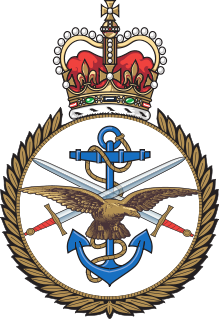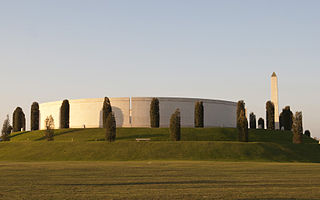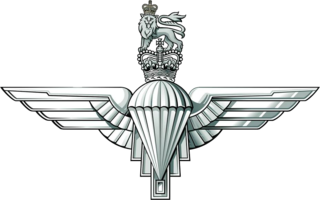 W
WThe British Armed Forces, also known as Her Majesty's Armed Forces, are the military services responsible for the defence of the United Kingdom, its overseas territories and the Crown dependencies. They also promote the UK's wider interests, support international peacekeeping efforts and provide humanitarian aid.
 W
WOverseas military bases of the United Kingdom enable the British Armed Forces to conduct expeditionary warfare. Bases tend to be located in or near areas of strategic or diplomatic importance, often used for the build-up or resupply of military forces, as was seen during the 1982 Falklands War and the use of RAF Ascension Island as a staging post. Most of the bases are located on British Overseas Territories or former colonies which retain close diplomatic ties with the UK.
 W
WThe Armed Forces Act 2018 is an Act of Parliament, introduced by Earl Howe on behalf of the Government, relating to British Army which gives powers to the Defence Council of the United Kingdom to make regulations about geographically-restricted service for regulars and the maximum number of occasions a 'regular' can be required to serve without such a geographic restriction.
 W
WThe Armed Forces Act 2006 is an Act of the Parliament of the United Kingdom.
 W
WThe Armed Forces Act 2011 is an Act of the Parliament of the United Kingdom.
 W
WThe Armed Forces Memorial is a national memorial in the United Kingdom, dedicated to the 16,000 servicemen and women of the British Armed Forces killed on duty or through terrorist action since after the Second World War. It is within the National Memorial Arboretum in Staffordshire.
 W
WThe British Army is the principal land warfare force of the United Kingdom, a part of British Armed Forces, under the Army Act of the Parliament of the United Kingdom. As of 2019, the British Army comprises just over 79,300 trained regular (full-time) personnel and just over 27,200 trained reserve (part-time) personnel.
 W
WThe British Armed Forces Federation (BAFF) is an independent non-statutory professional staff association for members of the British Armed Forces. It is politically non-partisan. Founded in late 2006 as a not-for-profit company limited by guarantee, BAFF has so far no full-time staff and no formal regional network. It operates collaboratively, using the Internet as the primary means of communication amongst its members worldwide. Membership is open to anyone who is serving or has served in the Royal Navy/Royal Marines, British Army, or Royal Air Force, irrespective of rank or type of engagement.
 W
WThe Defence High Frequency Communications Service or the DHFCS is a British military beyond line-of-sight communication system operated by the Ministry of Defence (MOD) and used predominately by the Royal Air Force, Royal Navy and British Army, as well as other authorised users.
 W
WThe Defence Reform Act 2014 is an Act of the Parliament of the United Kingdom. It has 51 sections and seven schedules, and is concerned with defence procurement and the UK Reserve Forces, particularly the Territorial Army.
 W
WA demob suit was a suit of civilian clothes given to a man on his demobilisation from the British armed forces at the end of the Second World War. Although the suits were of good quality, the need to clothe millions of demobilising servicemen led to supply problems that caused some men to receive suits that were not of the correct size. As a result, the demob suit became a common subject in British comedy in the post-war years.
 W
WAt the end of the Second World War, there were approximately five million servicemen and servicewomen in the British Armed Forces. The demobilisation and reassimilation of this vast force back into civilian life was one of the first and greatest challenges facing the postwar British government.
 W
WExercise Joint Warrior is a major biannual multi-national military exercise which takes place in the United Kingdom, predominately in north west Scotland. It is the successor of the Neptune Warrior exercises and Joint Maritime Course.
 W
WThe Head of the British Armed Forces, also known as Commander-in-Chief of the British Armed Forces, refers to the supreme command authority of the British Armed Forces, a military role vested in the monarch of the United Kingdom, currently Queen Elizabeth II. Under British constitutional law the command and government of the British armed forces is vested in the Queen and as such she holds the highest office in the military chain of command. The authority to issue orders and give commands to military personnel is delegated by the Queen to her commanders in the Field, however she does retain the right to issue orders personally.
 W
WThis is a list of equipment of the Royal Marines currently in use. It includes personal equipment, small arms, combat vehicles and watercraft. The Royal Marines are a highly specialised and adaptable light infantry force, a part of Her Majesty's Naval Service. The equipment of the Royal Marines has a high degree of commonality with other arms of the British Armed Forces - particularly the British Army - but includes some unique items.
 W
WMilling is a training activity in the British airborne infantry. For a fixed period, two opponents punch each other in the head as aggressively as possible without evasion.
 W
WThe Royal Air Force (RAF) is the United Kingdom's aerial warfare force. It was formed towards the end of the First World War on 1 April 1918 and is the world's oldest independent national air force. Following the Allied victory over the Central Powers in 1918, the RAF emerged as the largest air force in the world at the time. Since its formation, the RAF has taken a significant role in British military history. In particular, it played a large part in the Second World War where it fought its most famous campaign, the Battle of Britain.
 W
WThe Corps of Royal Marines (RM) is an amphibious light infantry and also one of the five fighting arms of the Royal Navy. The marines can trace their origins back to the formation of the English Army's "Duke of York and Albany's maritime regiment of Foot" at the grounds of the Honourable Artillery Company on 28 October 1664.
 W
WThe Royal Navy (RN) is the United Kingdom's naval warfare force. Although warships were used by English and Scottish kings from the early medieval period, the first major maritime engagements were fought in the Hundred Years' War against the Kingdom of France. The modern Royal Navy traces its origins to the early 16th century; the oldest of the UK's armed services, it is known as the Senior Service.